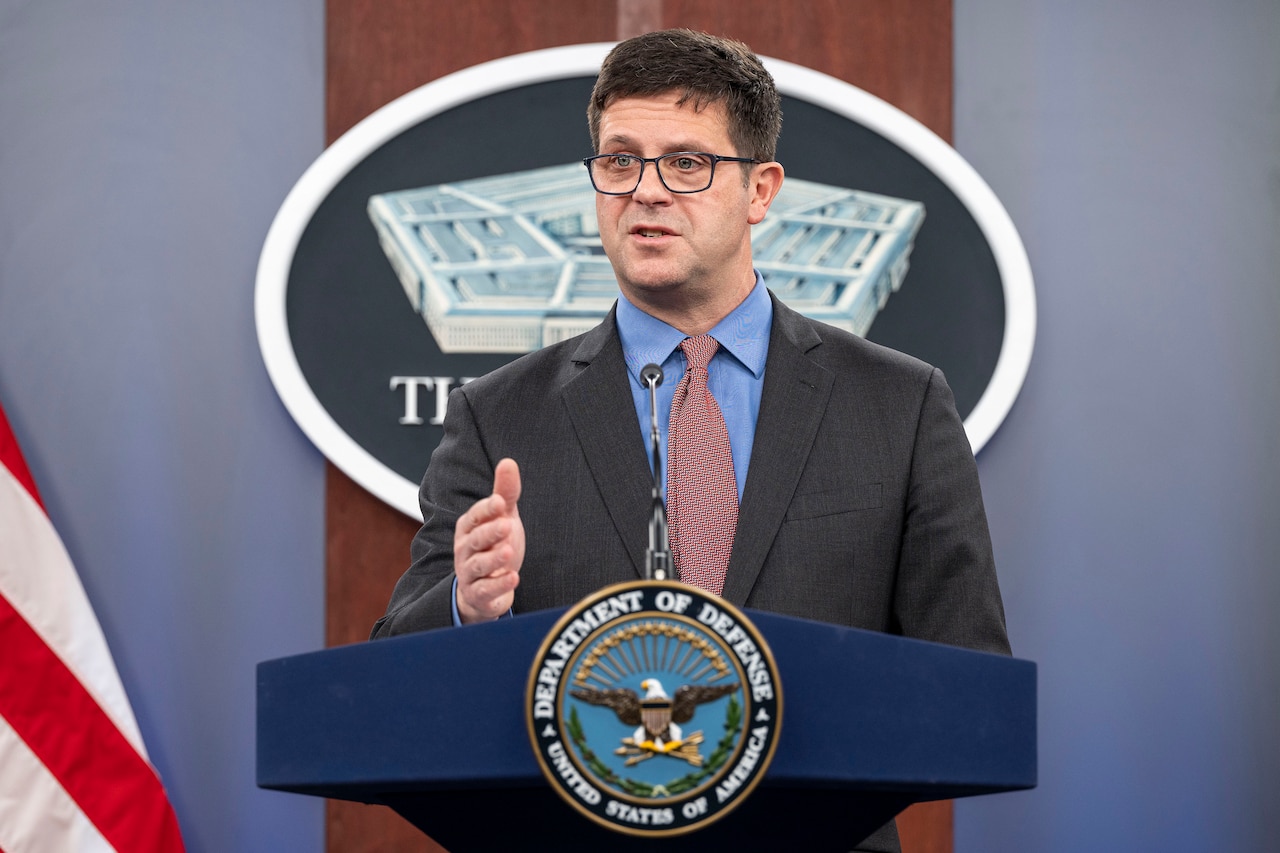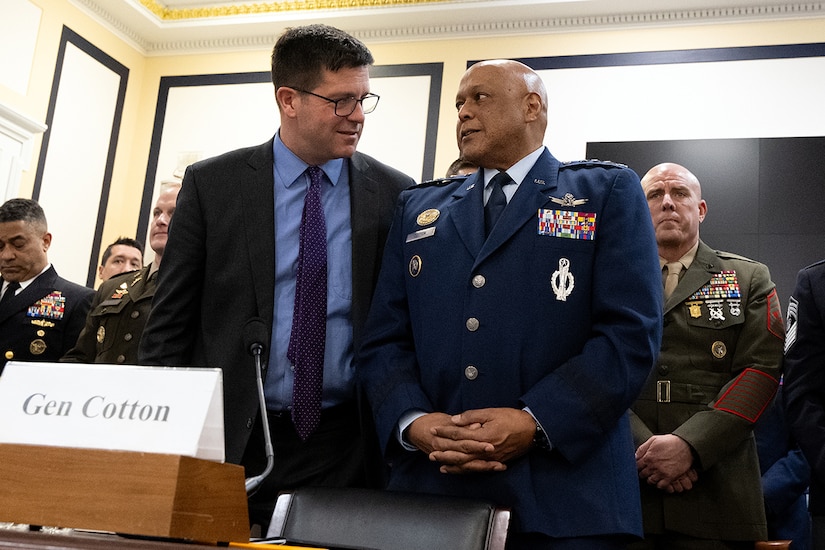
 John F. PlumbJohn F. Plumb, assistant secretary of defense for space policy, conducts a press briefing on the 2024 Department of Defense Commercial Space Integration Strategy at the Pentagon, April 2, 2024.Share:×Share Copy Link Email Facebook X LinkedIn WhatsAppDownload:Full Size (1.56 MB)Credit:Navy Petty Officer 1st Class Alexander Kubitza VIRIN:240402-D-PM193-1071Y
John F. PlumbJohn F. Plumb, assistant secretary of defense for space policy, conducts a press briefing on the 2024 Department of Defense Commercial Space Integration Strategy at the Pentagon, April 2, 2024.Share:×Share Copy Link Email Facebook X LinkedIn WhatsAppDownload:Full Size (1.56 MB)Credit:Navy Petty Officer 1st Class Alexander Kubitza VIRIN:240402-D-PM193-1071YAs the space domain increasingly becomes an essential warfighting domain, it is imperative that the Defense Department seize on the commercial sector's ability to rapidly develop and field technology, the Pentagon's top space policy official said last week.
John F. Plumb, assistant secretary of defense for space policy, said those factors serve as the driving force behind DOD's Commercial Space Integration Strategy, released earlier this month.
"It is very clear, not just in the department but across, possibly, the country and the globe in the wake of the Ukraine invasion, how essential space is to warfighting," Plumb told reporters during a meeting of the Defense Writers Group in Washington.
Spotlight: DOD Space StrategyDefense officials consistently note the extent to which warfighters depend on space for a variety of functions, which range from position, navigation and timing to targeting and surveillance of potential threats.
Officials have also warned that U.S. competitors have rapidly developed capabilities to deny the use of space and erode America's advantage in the domain.
In describing the domain's rapid rise in prominence among policy makers in Washington, Plumb recounted his time serving in the Pentagon's space policy office during President Barack Obama's administration.
"It was a hobby shop," Plumb said, describing sparse meetings and consistent losses in budget fights.
"Now, space is constantly a topic at the White House [and] at the top of the Pentagon," he said. "It is just a very different situation."

 Rocket LaunchA Falcon 9 rocket carrying Starlink satellites launches from Cape Canaveral Space Force Station, Fla., March 30, 2024.Share:×Share Copy Link Email Facebook X LinkedIn WhatsAppDownload:Full Size (573.44 KB)Credit:Joshua Conti, Space Force VIRIN:240330-X-KD758-2001Y
Rocket LaunchA Falcon 9 rocket carrying Starlink satellites launches from Cape Canaveral Space Force Station, Fla., March 30, 2024.Share:×Share Copy Link Email Facebook X LinkedIn WhatsAppDownload:Full Size (573.44 KB)Credit:Joshua Conti, Space Force VIRIN:240330-X-KD758-2001YA similar shift is evident in the commercial sector, he said, with space technology moving at an historic pace.
"The speed and the innovation in the commercial sector, especially at this time in our history, is just incredible," he said. "And so, the question is: 'Shouldn't we be trying to harness that?' And the answer is, of course, yes."
The Commercial Space Integration Strategy outlines the department's approach to effectively harnessing that innovation.
The strategy highlights four priorities to achieve integration with the commercial partners.
First, it calls for outlining DOD's requirements in contracts and other agreements to ensure commercial solutions are available when needed.
Second, the strategy calls for the integration of commercial solutions into defense architecture during peace time — including planning, training and day-to-day operations — to ensure warfighters can seamlessly utilize those solutions during crisis or conflict.
Third, the strategy calls for protecting and defending against threats to U.S. national security space assets, including those in space and on the ground and, where appropriate, commercial space solutions.
Finally, the strategy emphasizes that DOD will use its full range of financial, contractual and policy tools to support the development of new, commercial space solutions that have the potential to support the joint force.

 Strategic DiscussionJohn F. Plumb, assistant secretary of defense for space policy, speaks with Air Force Gen. Anthony J. Cotton, commander of U.S. Strategic Command, in a House Armed Services Committee room in Washington, March 21, 2024.Share:×Share Copy Link Email Facebook X LinkedIn WhatsAppDownload:Full Size (849.92 KB)Credit:EJ Hersom, DOD VIRIN:240321-D-DB155-1023Y
Strategic DiscussionJohn F. Plumb, assistant secretary of defense for space policy, speaks with Air Force Gen. Anthony J. Cotton, commander of U.S. Strategic Command, in a House Armed Services Committee room in Washington, March 21, 2024.Share:×Share Copy Link Email Facebook X LinkedIn WhatsAppDownload:Full Size (849.92 KB)Credit:EJ Hersom, DOD VIRIN:240321-D-DB155-1023YThe strategy is underpinned by four foundational principles — balance, interoperability, resilience and responsible conduct — to ensure that commercial solutions are integrated into national security space architecture.
In describing the strategy, Plumb said the overarching goal is to strengthen U.S. deterrence in a way that is as affordable as possible.
"The speed problem has increasingly become part of the deterrence problem," he said. "We have to move faster to stay ahead of the threat."